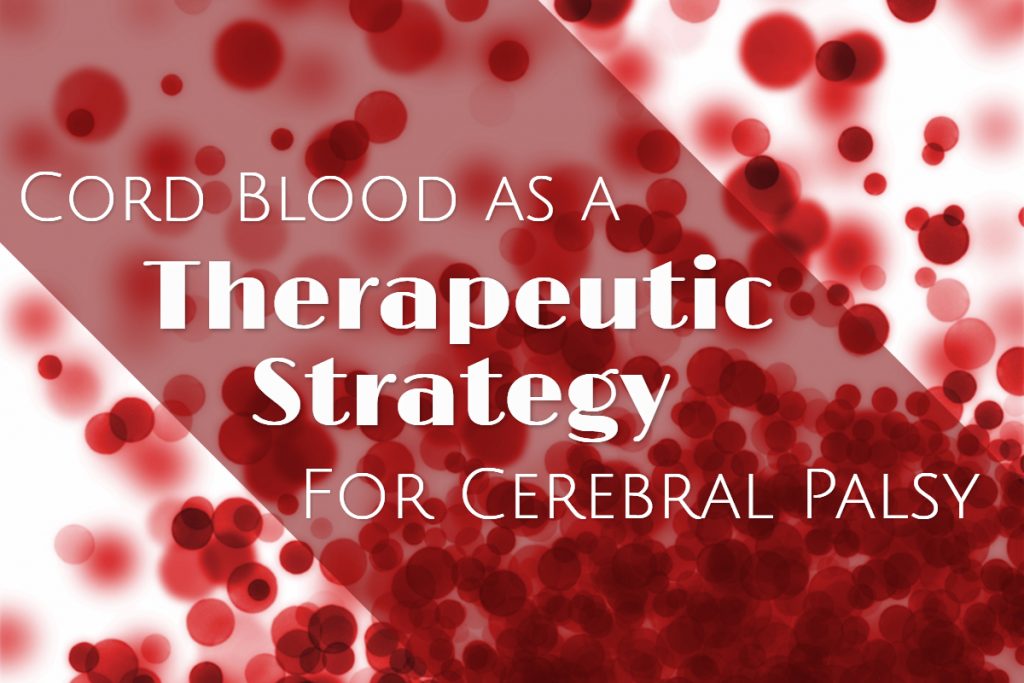Guest Author: This article was authored by Alex Diaz-Granados, Chief Editor at Cerebral Palsy Guidance.
Cerebral palsy is a neurological condition that affects thousands of babies born every year. Damage or malformation of the brain during development, most often in the womb, leads to motor and muscle symptoms. Children with cerebral palsy face a lifelong disability with consequences ranging from being wheelchair bound to painful, tight muscles and joints and even hearing loss, vision loss, cognitive deficits, and many more symptoms and complications that vary by individual.
Currently there is no cure for cerebral palsy, and children are treated with a variety of strategies that include surgery, medication, and physical and occupational therapy. Over the past decade researchers have investigated the possibility of treating children with cerebral palsy using autologous (“self-derived”) stem cells from umbilical cord blood. The theory is that these stem cells could potentially facilitate neurogenesis or repair damage in the brain.
Kurtzberg and her team are the first to use this treatment in a randomized, placebo-controlled clinical trial. The phase I trial to test the safety of giving children cord blood infusions is ongoing and is expected to be completed by May of 2018. The ongoing results, as reported by Kurtzberg and her team, show that the cord blood infusion treatment is proving safe enough to move on to a phase II trial with more participants and an evaluation of the effectiveness of the treatment.
The phase II clinical trial has recruited 63 children with cerebral palsy, between the ages of one and six years. Each participant is receiving two infusions: one autologous cord blood reinfusion and one placebo infusion. The participants are blind to the order in which they receive the infusions, some getting the cord blood first and others getting the placebo first.
The research that led to these clinical trials used cord blood infusions in animal models. The results demonstrated that stem cells from cord blood infusions could improve outcomes for animals with brain damage. The researchers have hypothesized that this result could be due to several factors: anti-inflammatory processes, stimulating endogenous neurogenesis, or releasing neurotrophic factors.
The Duke team is not limiting its research to cerebral palsy or even to using autologous (“self-derived”) cord blood. The results of another phase I trial have been published that demonstrated that the use of cord blood infusions in children with autism is safe. The trial results also show that signs the treatment is effective are already emerging. Both parents and clinicians reported improved behaviors in the children receiving the infusions. The research team has also expanded its study of cord blood treatment for children with cerebral palsy by initiating a phase I clinical trial to determine the safety of giving children cord blood from a sibling, an allogeneic transplant.
Pending the results of the phase II trial for children receiving infusions of their own cord blood, the Duke research team hopes to continue the study by including more participants, treating other neurological conditions, and even treating adults. The results so far are promising and demonstrate that cord blood stem cells are safe when given as an infusion and that they could be effective in treating a number of diseases that are otherwise incurable.
About the Author: Alex Diaz-Granados was born prematurely in 1963. He suffered irreversible damage to the motor control center of his brain and was diagnosed with cerebral palsy a few months later. Today, he represents Cerebral Palsy Guidance, supporting its mission of providing accurate and comprehensive information.
